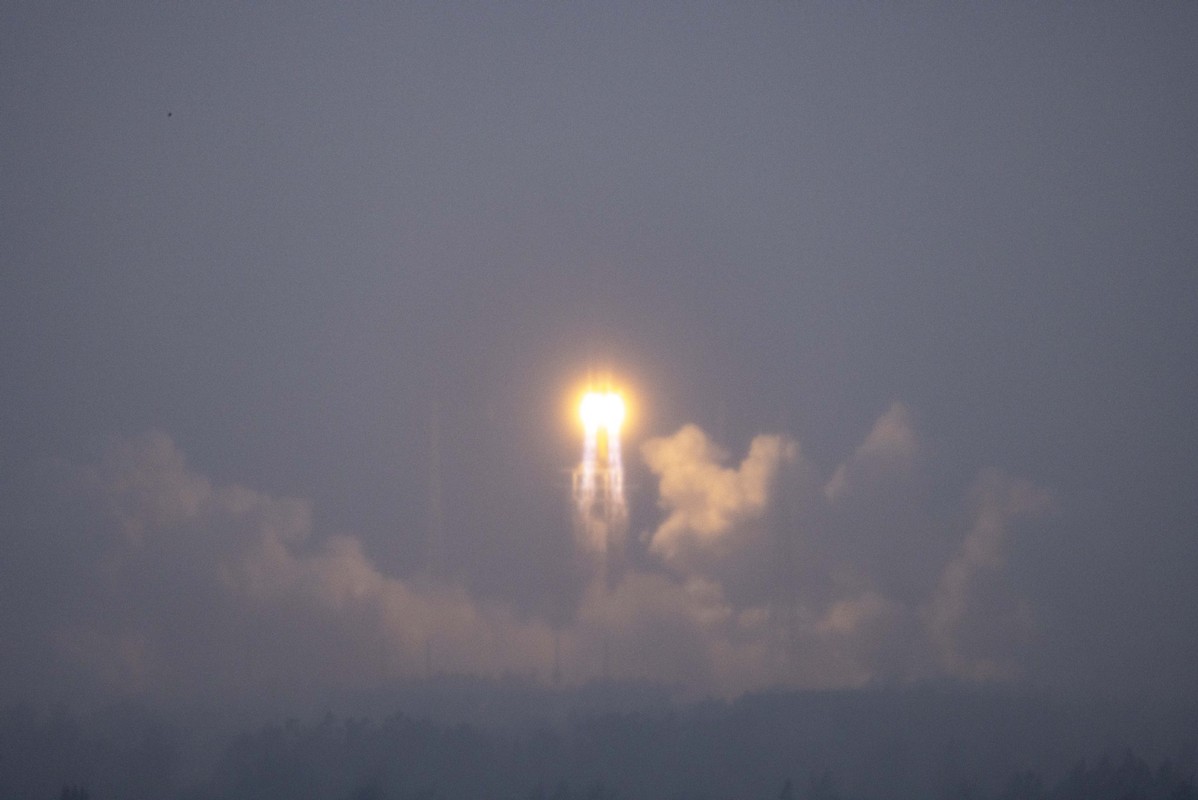
A Long March 5 rocket, carrying the Chang'e 6 spacecraft, blasts off from its launchpad at the Wenchang Space Launch Site in South China's Hainan province, May 3, 2024. [Photo/Xinhua]
Robotic spacecraft aims to collect and return samples from moon's far side
China's Chang'e 6 probe entered lunar orbit on Wednesday morning, the China National Space Administration said in a news release.
It said that under the guidance of spacecraft control experts at the Beijing Aerospace Control Center, Chang'e 6 conducted a braking maneuver before entering lunar orbit at 10:12 am.
Before the crucial maneuver, the 8.35-metric-ton Chang'e 6 had flown nearly 113 hours along an Earth-moon transfer trajectory.
A key orbital control measure for any lunar mission, the braking operation reduces the spacecraft's speed to make sure it can be captured by the moon's gravitational field rather than accidentally flying past it.
The Chang'e 6 mission is the world's first attempt to bring samples from the far side of the moon back to Earth. The robotic probe was launched by a Long March 5 heavy-lift carrier rocket on Friday afternoon from the Wenchang Space Launch Center in Hainan province.
The 10 previous lunar sample-return missions, undertaken by the United States, the former Soviet Union and China, all collected samples from the moon's near side.
The Chang'e 6 spacecraft was designed and built by the Beijing-based China Academy of Space Technology and consists of four components — an orbiter, a lander, an ascender and a reentry capsule.
Following its arrival in lunar orbit, the probe will adjust its orbital altitude and inclination before splitting into two parts. The orbiter and reentry capsule will remain in orbit, while the lander-ascender combination will start its approach to the lunar surface.
The lander-ascender combination will make a soft landing in the South Pole-Aitken Basin — the largest, oldest and deepest basin found on the moon. It will then start using a drill and a mechanical arm to gather surface and underground samples.
If the mission plan works well, up to 2 kilograms of stones and soil will be collected and packed in a vacuum-sealed metal container inside the ascender. After the collection operation is completed, the engines of the ascender will elevate it to lunar orbit for docking with the reentry capsule and transfer of the container.
The ascender will then undock, and the combination of orbiter and reentry capsule will leave lunar orbit and return to the Earth's orbit, where they will break up. The reentry capsule will conduct a host of complicated maneuvers to land at the Siziwang Banner Landing Site in the Inner Mongolia autonomous region.
Wang Yanan, chief editor of Aerospace Knowledge magazine, said the soft landing on the moon will be a crucial maneuver for Chang'e 6, with many uncertainties.
"No one can be certain about the specific landing destination," he said. "We don't know about its detailed landscape, or how many big rocks and impact craters there are. Yes, we can analyze its condition through remote-sensing images, but they are far from accurate enough to let us know about small obstacles on the lunar surface.
"Also, whether the underground structure of the landing site is suitable for digging operations will remain unknown until Chang'e 6 actually touches down there."





